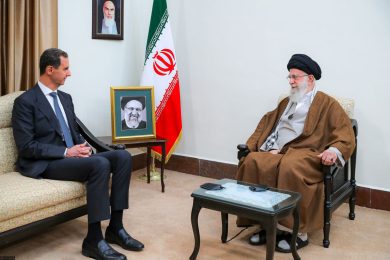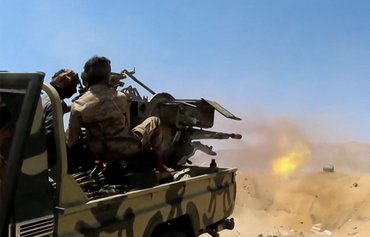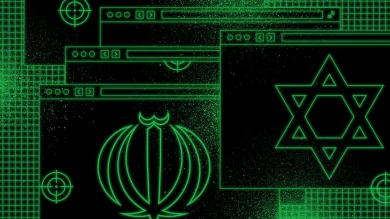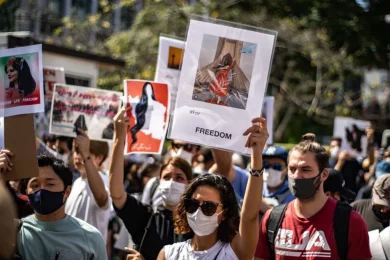The slogan “Women, Life, Freedom” has become the defining chant of Iran’s revolutionary movement. What started as a protest against the oppressive mandatory hijab laws has evolved into a nationwide call for freedom, justice, and democracy. Iranian women have taken the lead in challenging the regime, standing against the Islamic Revolutionary Guard Corps (IRGC) and its brutal repression.
This report explores:
• The origin and meaning of “Women, Life, Freedom.”
• How this slogan has fueled protests across Iran.
• The role of the IRGC in suppressing women’s rights.
• How Iranian women’s resistance has gained global support.
• What the future of this movement could look like.
1. The Origins of “Women, Life, Freedom”
The slogan “Women, Life, Freedom” (زن، زندگی، آزادی) originated from the Kurdish feminist movement in the early 2000s. It was first used by Kurdish women activists in Turkey and Syria, symbolizing gender equality, dignity, and human rights.
In Iran, this slogan gained national prominence following the death of Mahsa Amini in September 2022. Amini, a 22-year-old Kurdish woman, was arrested by Iran’s morality police for allegedly not wearing her hijab “properly.” She died in custody, sparking outrage and mass protests across the country.
For Iranian women, the slogan represents:
• Women: Their right to bodily autonomy and gender equality.
• Life: The right to live freely, without state-imposed restrictions.
• Freedom: The demand for democracy, free speech, and an end to IRGC oppression.
This phrase is no longer just a protest slogan—it is the foundation of a movement that challenges theocratic rule and state-sponsored gender oppression.
2. The Role of Women in Iran’s Revolutionary Movement
Iranian women have been at the forefront of resistance movements for decades, but their role in the 2022-2023 protests has been unprecedented.
A. Defying the Mandatory Hijab
One of the most powerful acts of defiance has been removing the hijab in public:
• Women across Iran have burned their hijabs as a sign of protest.
• Many have walked through the streets unveiled, despite knowing they could face arrest or violence.
• The hijab has transformed from a religious symbol into a political battleground.
The IRGC and morality police have responded with:
• Mass arrests of women who defy the hijab laws.
• Surveillance and digital tracking of activists.
• Harsh prison sentences for those who speak out.
Despite these threats, Iranian women continue to lead demonstrations, document abuses, and organize underground networks.
B. Women as Political and Social Leaders
Iranian women are not just protesters—they are leaders in every sense:
• Journalists like Niloofar Hamedi have risked their lives to report on government abuses.
• Lawyers and human rights activists, including Nasrin Sotoudeh, continue to fight against oppressive laws.
• University students have led some of the largest protests, demanding systemic change.
The IRGC sees women’s leadership as a threat to its power, which is why it has intensified violence against female activists.
3. The IRGC’s Role in Suppressing Women’s Rights
The IRGC has played a direct role in crushing Iran’s women-led revolution through:
A. Brutal Crackdowns on Protests
The IRGC and Basij paramilitary forces have responded to protests with:
• Live ammunition, rubber bullets, and tear gas.
• Mass arrests and forced confessions.
• Sexual violence and torture in detention centers.
Women have been beaten, kidnapped, and even killed for participating in protests. The IRGC views the women’s movement as an existential threat to the Islamic Republic.
B. Targeting Women Activists
The IRGC has specifically targeted:
• Women journalists, arresting them under false charges of “spreading propaganda.”
• Social media activists, shutting down accounts and monitoring online activities.
• Political dissidents, sentencing them to years in prison or even execution.
Despite these tactics, Iranian women continue to resist, refusing to be silenced.
4. Global Support for Iranian Women
The “Women, Life, Freedom” movement has inspired global protests and international solidarity.
A. Protests Around the World
Iranian diaspora communities have organized large-scale protests in cities like:
• London, Paris, Berlin, and New York.
• Demonstrations in front of Iranian embassies demanding action against the regime.
• University campuses holding rallies in support of Iranian women.
These global movements ensure that the Iranian regime’s human rights abuses remain in the spotlight.
B. Sanctions Against the IRGC
Many countries have imposed sanctions on the IRGC for its role in suppressing protests:
• The United States has designated the IRGC as a terrorist organization.
• The European Union and Canada have sanctioned IRGC officials responsible for crimes against women.
• Activists are pushing for more governments to ban the IRGC completely.
Sanctions limit the IRGC’s funding and weaken its control, making them a critical tool in supporting Iran’s women-led movement.
C. Social Media and Digital Resistance
Despite internet blackouts, Iranian women use:
• VPNs and encrypted apps to bypass censorship.
• Social media campaigns like #WomenLifeFreedom to spread awareness.
• Citizen journalism, documenting IRGC violence through videos and livestreams.
Digital activism ensures that the voices of Iranian women are heard worldwide.
5. The Future of the Women, Life, Freedom Movement
The “Women, Life, Freedom” movement is not just a protest—it is a revolution in the making.
A. Women Will Shape Iran’s Future
• Iranian women have shattered the myth that they are passive victims.
• They are proving that gender equality is central to Iran’s democratic future.
• Future governments in Iran will have to recognize women’s leadership.
B. The Regime’s Fear of Change
• The IRGC is losing control, as younger generations refuse to accept oppressive laws.
• The regime is isolated globally, with fewer allies supporting it.
• Women’s defiance is weakening the regime’s legitimacy from within.
C. How the World Can Support
1. Recognize the IRGC as a terrorist organization globally.
2. Continue sanctions on IRGC officials responsible for crimes against women.
3. Support safe digital tools for Iranian activists to communicate securely.
4. Amplify Iranian women’s voices in international media.
5. Provide asylum for women fleeing persecution.
Conclusion: The Power of “Women, Life, Freedom”
The slogan “Women, Life, Freedom” is no longer just a chant—it is a revolutionary call that is reshaping Iran’s future. Iranian women have shown extraordinary bravery, refusing to submit to oppression despite the IRGC’s brutal tactics.
Their fight is not just about women’s rights—it is about the freedom of an entire nation.
Join Our Newsletter!
Stay informed with the latest updates, news, and ways to take action in the fight for justice and global security. Sign up now to get updates delivered straight to your inbox!





